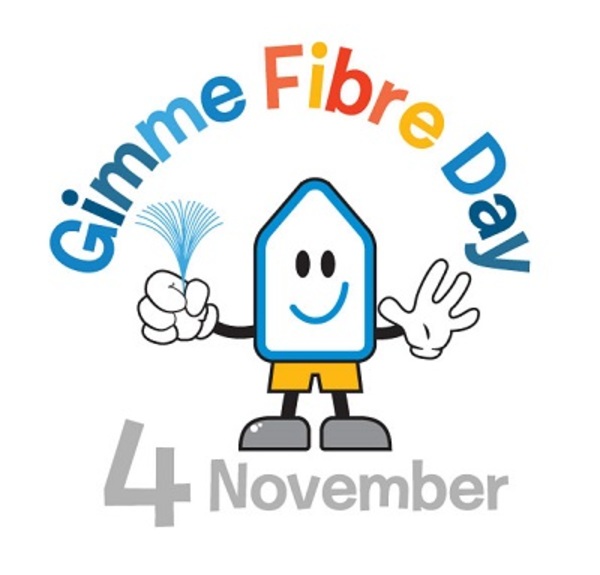When our children were toddlers, I remember frequently asking my wife if she could postpone using the phone so I could check my e-mails. Back then, e-mail was usually accessed via dial-up telephone lines, forcing families like ours to choose between making a phone call and using the internet—you couldn’t do both at the same time. Home internet connections were dreadfully slow with 14.4 kbps modems being the standard.

I can only imagine what our home will be like in the next 20 years as 3D HDTV, 4K, 8K and virtual reality (VR) video takes over our bandwidth-hungry society.
Gimme Fibre Day
This week we celebrate ‘Gimme Fibre Day,’ otherwise known as the birthday of Nobel Prize winner Sir Charles Kuen Kao, the man who changed the way the world communicates by transmitting light in fibers for optical communication.
From the outset, fiber-optic technology has enabled broadband speeds. Gigabit or 1,000 Mbps is about 100 times higher than the internet speed we’re receiving at home today. Without fiber, many things we rely on would be impossible: banking, working from home, online shopping, streaming audio and video, using mobile phones and tablets and healthcare applications.
At increasing speed, we are evolving into a global digital society. This is profoundly transforming the way we live, work, learn and thrive. Access to fiber is a key component for businesses with companies even more under pressure to deliver on a global scale.
Here are three areas for the region to consider as we look toward 2019:
Federal and local government funding plays an important role in stimulating development of network infrastructure, tightly coupled with GDP growth. Europe, the United States and thriving economic centers in Asia Pacific (e.g. Singapore, Japan, Taiwan and Hong Kong) are leading the world when it comes to the provision of fast, reliable broadband, which suggests a relationship between available bandwidth and economic health. The emerging narrative is that countries with a focus on fiber-to-the-premise (FTTP) are pulling far ahead. Norway, Sweden and Denmark are among those countries in Europe leading on speed, according to Cable.co.uk.
Fostering the most skilled next generation of workers requires a best-in-class education system, and - today - this is underpinned by access to technology and connectivity to enable the rapid exchange of information and ideas. Investment in fiber represents a huge step forward for young learners in rural and hard-to-reach areas.
Education through online services will be underpinned by high quality video-based content, which will have an exponential impact on the data speeds and capacity required for our schools, colleges and other places of learning. This massive increase in the need for speed means that only deep fiber deployment into rural areas will satisfy such demand.
Make light work for each organization. The properties of light make it the fastest carrier of information. New services, technologies and increased competition are driving network operators to increase bandwidth. To make a truly ‘smart’ choice, one needs to examine the complete picture, fully understand the options and tradeoffs and develop a complete long-term business plan while balancing immediate and future requirements.
If you want to know more, check out our e-Book or leave a comment for one of our fiber experts.






